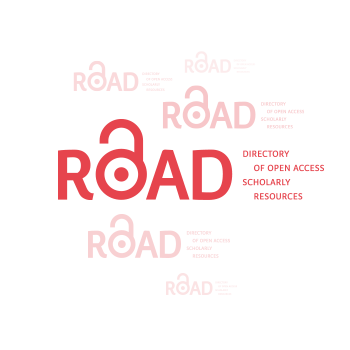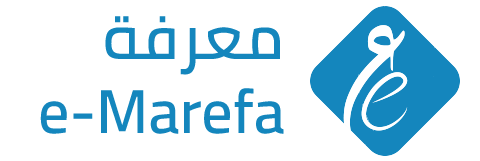The Impact of Prompt Engineering of Generative AI Tools on the Quality of Arabic Marketing Text Content Production
DOI:
https://doi.org/10.59994/pau.2025.2.161Keywords:
Prompt Engineering, Generative AI Tools, Marketing ContentAbstract
This study aimed to evaluate the impact of prompt engineering for generative artificial intelligence tools on the production of Arabic marketing text content from the perspective of marketing students at Al-Quds Open University in Palestine. Adopting a descriptive-analytical methodology, the study employed an electronic questionnaire administered to a simple random sample of 92 participants. Using SPSS for data analysis, the findings confirmed that prompt engineering constitutes a fundamental and influential factor in enhancing the quality of Arabic marketing content generated by AI tools. The statistical analyses revealed that the five dimensions of prompt engineering: "task formulation, context setting, role assignment, output indicators, and input provision" all play significant and complementary roles in improving the effectiveness of the marketing texts generated. Among these, the "output indicators" dimension had the greatest impact (52%), followed by "context setting" (47.9%), "input provision" (46.0%), and "role assignment" (38.1%). These results emphasize the need to shift from merely “using a tool” to a more interactive and conscious management of the tool through effective prompt engineering. The study recommended integrating prompt engineering concepts into university curricula within digital marketing courses, designing applied training programs focused on its five dimensions, and encouraging experimental research that tests the effectiveness of AI-generated content in real marketing campaigns. The scientific contribution of this study lies in presenting a comprehensive explanatory model that highlights the statistical relationship between the dimensions of prompt engineering and the quality of Arabic marketing content production, while also examining the individual impact of each dimension—such as inputs, roles, and output indicators. Additionally, the study enriches the Arabic academic literature by addressing a linguistic and cultural context that is often overlooked in generative AI research.
Downloads
References
المراجع العربية:
أحمد، هويدا؛ الشريف، هند. (2019). دور المحتوى التسويقي الإلكتروني في نشر الوعي الاستهلاكي لدى الشباب السعودي عبر وزارة التجارة والاستثمار: دراسة ميدانية. مجلة بحوث العلاقات العامة الشرق الأوسط، 7(25)، 275-332.
ثابت، محمد. (2024). الذكاء الاصطناعي التوليدي GAI ومستقبل الكتابة العلمية: دراسة استطلاعية لأدوات مراجعة الأدبيات. مجلة كلية الآداب، 25(72)، 73-118.
جامعة القدس المفتوحة. (2024). أعداد الطلبة الملتحقين بالجامعة (بكالوريوس) للفصل الثاني "1232" من العام الجامعي 2023/2024. https://arab-scholars.com/ff5259
الحمداني، موفق؛ الجادري، عدنان؛ قنديلجي، عامر؛ بني هاني، عبدالرزاق؛ أبو زينة، فريد. (2021). مناهج البحث العلمي. الأردن، مؤسسة الوراق للنشر والتوزيع.
زغلول، هشام. (2023). صياغة المحتوى الإبداعي بالإعلام التربوي باستخدام تقنية الذكاء الاصطناعي ChatGPT: استكشاف الفرص والتحديات. مجلة بحوث التربية النوعية، العدد (75)، 55-140.
شرف، سالمة. (2023). استخدام تقنيات الذكاء الاصطناعي في كتابة المحتوى التسويقي لصانعي المحتوى في مصر. المجلة المصرية لبحوث الإعلام، العدد (84)، 529-566.
علي، محمد. (2024). استخدام أدوات الذكاء الاصطناعى في تنمية مهارات التسويق بالمحتوى لدى طلاب مدارس السياحة والفنادق. مجلة جامعة الفيوم للعلوم التربوية والنفسية، 18(3)، 182-225.
العمري، نجلاء؛ الغامدي، بشائر؛ الكناني، عهود؛ البلادي، وجدان؛ الصرابي، ياسمين؛ العتيبي، نسرين. (2024). فاعلية برنامج تدريبي قائم على التصميم التعليمي لتطوير مهارات هندسة الأوامر وإنتاج محتوى الحقائب التدريبية باستخدام الذكاء الاصطناعي من وجهة نظر المدربين والمعلمين. مجلة دراسات تربوية واجتماعية، 30(6.2)، 473-526.
ملياني، خلود؛ الجحدلي، نورة. (2022). العوامل المرتبطة بصناعة المحتوى التسويقي عبر تويتر ودورها في تعزيز الولاء للعلامة التجارية للمنظمات. مجلة إتحاد الجامعات العربية لبحوث الإعلام وتكنولوجيا الإتصال، العدد (8)، 59-92.
الواصل، مشاعل؛ المعلم، شهد؛ الحربي، رائد؛ الرافعي، مهيتاب. (2023). تأثير تقنيات الذكاء الاصطناعي في تحسين استراتيجيات التسويق الرقمي. مجلة اتحاد الجامعات العربية لبحوث الإعلام وتكنولوجيا الاتصال، العدد (11)، 337-369.
الكاملي، عبد القادر. (12 مارس، 2023). ما سر ضعف المحتوى العربي في برامج الذكاء الاصطناعي؟ "شات جي بي تي" يجيب. الجزيرة. متوفر على الرابط: https://www.aljazeera.net/
بايبير، سيلينا. (27 مارس، 2023). لماذا يجب أن تبدأ بصناعة محتوى عربي. godaddy. متوفر على الرابط: https://www.godaddy.com/
المراجع العربية بنظام الرومنة:
Ahmd, Hwyda؛ Alshryf, Hnd. (2019). dwr almhtwa altswyqy alelktrwny fy nshr alw'ey alasthlaky lda alshbab als'ewdy 'ebr wzarh altjarh walastthmar: drash mydanyh. mjlh bhwth al'elaqat al'eamh alshrq alawst, 7(25), 275-332.
Thabt, Mhmd. (2024). aldka' alastna'ey altwlydy GAI wmstqbl alktabh al'elmyh: drash asttla'eyh ladwat mraj'eh aladbyat. mjlh klyh aladab, 25(72), 73-118.
Jam'eh Alqds Almftwhh. (2024). a'edad altlbh almlthqyn baljam'eh (bkalwryws) llfsl althany "1232" mn al'eam aljam'ey 2023/2024. https://arab-scholars.com/ff5259
Alhmdany, Mwfq؛ Aljadry, 'Ednan؛ Qndyljy, 'Eamr؛ Bny Hany, 'Ebdalrzaq؛ Abw Zynh, Fryd. (2021). mnahj albhth al'elmy. alardn, m'essh alwraq llnshr waltwzy'e.
Zghlwl, Hsham. (2023). syaghh almhtwa alebda'ey bale'elam altrbwy bastkhdam tqnyh aldka' alastna'ey ChatGPT: astkshaf alfrs walthdyat. mjlh bhwth altrbyh alnw'eyh, al'edd (75), 55-140.
Shrf, Salmh. (2023). astkhdam tqnyat aldka' alastna'ey fy ktabh almhtwa altswyqy lsan'ey almhtwa fy msr. almjlh almsryh lbhwth ale'elam, al'edd (84), 529-566.
'Ely, Mhmd. (2024). astkhdam adwat aldka' alastna'ea fy tnmyh mharat altswyq balmhtwa lda tlab mdars alsyahh walfnadq. mjlh jam'eh alfywm ll'elwm altrbwyh walnfsyh, 18(3), 182-225.
Al'emry, Njla'؛ Alghamdy, Bsha'er؛ Alknany, 'Ehwd؛ Alblady, Wjdan؛ Alsraby, Yasmyn؛ Al'etyby, Nsryn. (2024). fa'elyh brnamj tdryby qa'em 'ela altsmym alt'elymy lttwyr mharat hndsh alawamr wentaj mhtwa alhqa'eb altdrybyh bastkhdam aldka' alastna'ey mn wjhh nzr almdrbyn walm'elmyn. mjlh drasat trbwyh wajtma'eyh, 30(6.2), 473-526.
Mlyany, Khlwd؛ Aljhdly, Nwrh. (2022). al'ewaml almrtbth bsna'eh almhtwa altswyqy 'ebr twytr wdwrha fy t'ezyz alwla' ll'elamh altjaryh llmnzmat. mjlh ethad aljam'eat al'erbyh lbhwth ale'elam wtknwlwjya aletsal, al'edd (8), 59-92.
Alwasl, Msha'el؛ Alm'elm, Shhd؛ Alhrby, Ra'ed؛ Alraf'ey, Mhytab. (2023). tathyr tqnyat aldka' alastna'ey fy thsyn astratyjyat altswyq alrqmy. mjlh athad aljam'eat al'erbyh lbhwth ale'elam wtknwlwjya alatsal, al'edd (11), 337-369.
Alkamly, 'Ebd Alqadr. (12 mars, 2023). ma sr d'ef almhtwa al'erby fy bramj aldka' alastna'ey? "shat jy by ty" yjyb. aljzyrh. mtwfr 'ela alrabt: https://www.aljazeera.net/
Baybyr, Sylyna. (27 mars, 2023). lmada yjb an tbda bsna'eh mhtwa 'erby. godaddy. mtwfr 'ela alrabt: https://www.godaddy.com/
المراجع الأجنبية:
Bansal, P. (2024). Prompt engineering importance and applicability with generative AI. Journal of Computer and Communications, 12(10), 14-23.
Feuerriegel, S., Hartmann, J., Janiesch, C., & Zschech, P. (2024). Generative AI. Business & Information Systems Engineering, 66(1), 111–126. https://doi.org/10.1007/s12599-023-00834-7
Havia, M. (2024). Generative AI in content SEO processes. [Master] Aalto University, Finland.
Henrickson, L., & Meroño-Peñuela, A. (2025). Prompting meaning: a hermeneutic approach to optimising prompt engineering with ChatGPT. AI & SOCIETY, 40(2), 903-918.
Huszár, P. (2024). Multilingual prompt engineering via large language models: an approach to sentiment analysis (Doctoral dissertation, University of Stuttgart).
Korzynski, P., Mazurek, G., Krzypkowska, P., & Kurasinski, A. (2023). Artificial intelligence prompt engineering as a new digital competence: Analysis of generative AI technologies such as ChatGPT. Entrepreneurial Business and Economics Review, 11(3), 25-37.
Knoth, N., Tolzin, A., Janson, A., & Leimeister, J. M. (2024). AI literacy and its implications for prompt engineering strategies. Computers and Education: Artificial Intelligence, 6, 100225.
Lim, W. M., Gunasekara, A., Pallant, J. L., Pallant, J. I., & Pechenkina, E. (2023). Generative AI and the future of education: Ragnarök or reformation? A paradoxical perspective from management educators. The international journal of management education, 21(2), 100790.
Müller, J., & Christandl, F. (2019). Content is king–But who is the king of kings? The effect of content marketing, sponsored content & user-generated content on brand responses. Computers in human behavior, 96, 46-55.
Parmar, S., & Patel, (2024). H. Prompt Engineering For Large Language Model. https://doi.org/10.13140/RG.2.2.11549.93923
Peñalvo, F. J. G., & Ingelmo, A. V. (2023). What do we mean by GenAI? A systematic mapping of the evolution, trends, and techniques involved in Generative AI. IJIMAI, 8(4), 7-16.
Rathod, J. D., & Kale, G. V. (2024). Systematic Study of Prompt Engineering. International Journal of Science, Technology, and Engineering, 12(6), 597-613.
Team, G., Georgiev, P., Lei, V. I., Burnell, R., Bai, L., Gulati, A., ... & Batsaikhan, B. O. (2024). Gemini 1.5: Unlocking multimodal understanding across millions of tokens of context. arXiv preprint arXiv:2403.05530.
Vatsal, S., & Dubey, H. (2024). A survey of prompt engineering methods in large language models for different nlp tasks. arXiv preprint arXiv:2407.12994.
Downloads
Published
How to Cite
Issue
Section
License
Copyright (c) 2025 Journal of Palestine Ahliya University for Research and Studies

This work is licensed under a Creative Commons Attribution 4.0 International License.
مجلة جامعة فلسطين الاهلية للبحوث والدراسات تعتمد رخصة نَسب المُصنَّف 4.0 دولي (CC BY 4.0)











